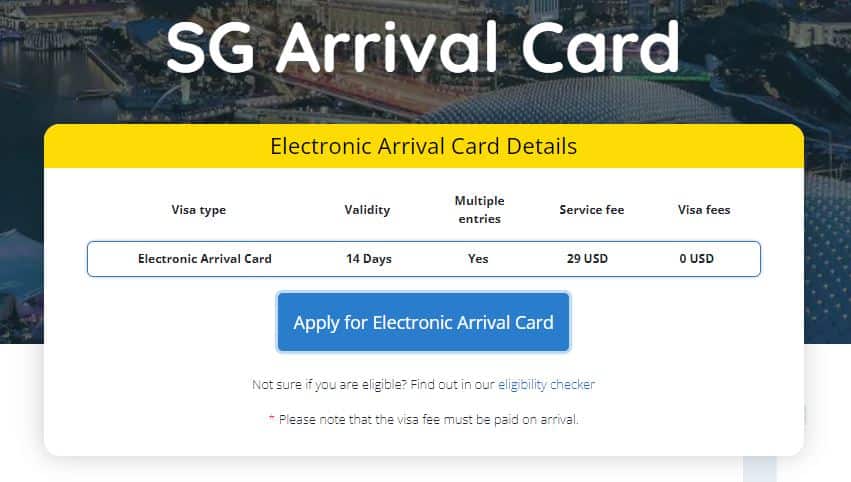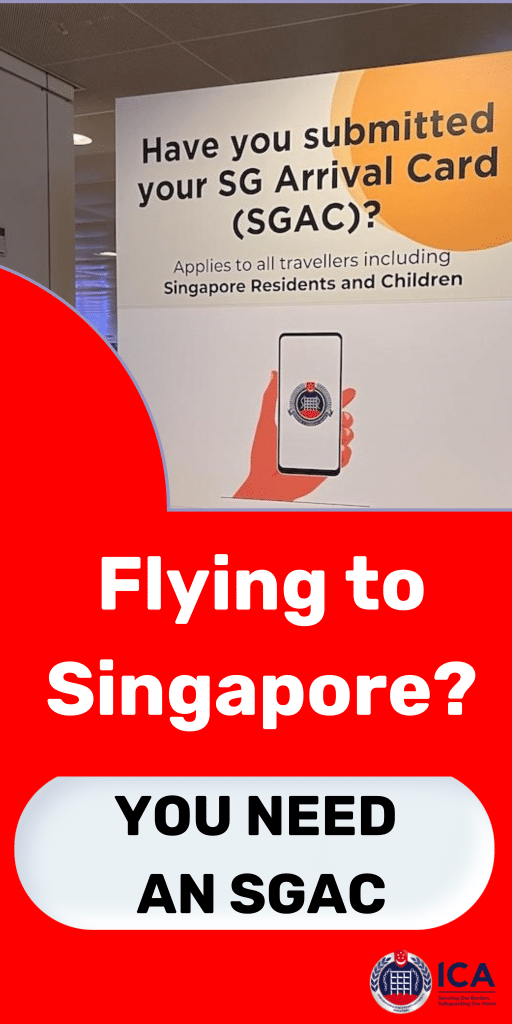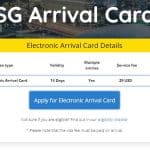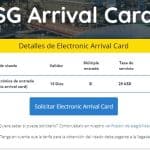Introduction
Singapore is a popular travel destination known for its stunning architecture, diverse culture, and mouthwatering cuisine.
However, before you can experience all that this island city-state has to offer, you need to make sure you have the proper documentation to enter Singapore legally.
The two main options for foreigners looking to visit Singapore are applying for a visa in advance or obtaining an arrival card upon landing at the airport.
But what exactly is the difference between these two documents and which one is right for your trip?
This comprehensive guide covers everything you need to know about the Singapore visa versus arrival card conundrum.
What is a Singapore Visa?
A Singapore visa is an official document issued by the Singapore government that grants the holder legal permission to enter and stay in Singapore for a specified period of time and purpose. There are several different types of visas available:
Visitor Visa
The most common visa for tourists is the Visitor Visa. This allows you to stay in Singapore as a tourist for up to 30 days. To qualify, you need to provide proof of funds, confirmed travel plans, and documents showing you plan to exit Singapore after your stay.
Business Visa
For business travelers, the Business Visa allows stays of up to 3 months for conducting business activities like meetings, conferences, training, etc. You’ll need a letter of invitation from a Singapore company to apply.
Employment Pass
For longer term stays, the Employment Pass is for foreign professionals working in managerial, executive, or specialized jobs in Singapore. It’s valid for up to 2 years and is renewable. You’ll need a job offer to qualify.
Dependent Pass
Spouses and children under 21 of Employment Pass holders can apply for the Dependent Pass to legally reside in Singapore with their family member.
Student Pass
International students who want to study full-time at an educational institution in Singapore need to obtain a Student Pass. This allows stays matching the duration of your academic program.
Pros of Getting a Visa
Getting a Singapore visa in advance comes with several advantages:
- Pre-approval – With a visa, you know for certain that you will be allowed to enter Singapore, which gives peace of mind before your trip.
- Avoid hassle upon arrival – Having a visa speeds up the immigration process when you land in Singapore. You can proceed directly to baggage claim rather than having to talk to immigration officers.
- Longer validity – Visas can allow stays of up to 30 days, 90 days, or even 2 years depending on the type. The arrival card is only valid for 30 days.
- Easier to extend stay – If already in Singapore, it’s simpler to apply for a visa extension rather than trying to convert an arrival card.
- Multiple entries – Some Singapore visas allow multiple entries, so you can exit and re-enter Singapore during the validity period.
What is the Singapore Arrival Card?
The arrival card, officially called the Disembarkation/Embarkation Card, is a paper form that incoming travelers to Singapore must fill out upon arrival at the airport. It serves as a temporary visitor pass allowing a stay of up to 30 days in Singapore. You’ll need to provide basic personal details, passport info, address where you’re staying, and declare any prohibited items.
Unlike a visa which needs to be applied for in advance, the arrival card is issued on the spot when you land at the Singapore airport. After clearing immigration, you submit the card when exiting the airport.
Pros of Getting Arrival Card
The main benefits of using the arrival card system are:
- No pre-approval needed – You don’t have to apply for anything in advance and can decide last minute to travel to Singapore.
- Lower cost – The arrival card is free while applying for a visa has processing fees.
- Shorter trips – For quick vacations under 30 days, the arrival card has you covered duration-wise.
- Transit – Even if just passing through Singapore en route somewhere else, you can still use the arrival card.
- Citizenship allowed – Citizens of certain countries are eligible for 30 day visa-free entry to Singapore using the arrival card.
Who Needs a Visa vs Arrival Card?
Whether you should apply for a visa or can use the arrival card depends primarily on your nationality. There are three categories:
Visa-Free Access Nationalities
Citizens from countries like the USA, UK, Australia, and most of Western Europe can enter Singapore without a visa. They will be issued an arrival card valid for 30 days upon landing at the airport.
Visa-Required Nationalities
Citizens of China, India, and some Middle Eastern, African, and Eastern European nations must obtain a proper Singapore visa before travel. They are not eligible for visa-free entry via the arrival card.
Select Nationalities With Conditional Visa-Free Access
For travelers from countries like Brazil, South Korea, and Thailand, the eligibility for using the arrival card depends on the passport holder’s purpose of visit. For tourism under 30 days, they can use the arrival card. For other purposes or longer stays, they would need to apply for a visa before departure.
How to Apply for a Singapore Visa
If you’ve determined that you need an actual Singapore visa, here is a brief overview of the process:
- Find the Singapore visa application form online and complete it thoroughly. Make sure to select the right visa type.
- Prepare supporting documents like passport copies, passport photos, proof of funds, invitation letters, etc.
- Pay the visa application fee. This is usually around $30-$50 USD.
- Submit the form, documents, and payment to the nearest Singapore embassy, consulate, or visa processing center. Many third party visa agencies also offer application services for a fee.
- Wait for processing. Approval can take anywhere from 1 day to 2 weeks depending on visa type.
- If approved, you’ll be issued an electronic visa or sticker visa to bring with you to Singapore.
Duration of Stay in Singapore
Whether you enter Singapore on a visa or tourist arrival card, there are limits to the duration of stay:
- Visitor Visa – Up to 30 days stay allowed
- Arrival Card – Up to 30 days stay allowed
- Business Visa – Typically issued for 30 days up to 3 months stay
- Employment Pass – Valid up to 2 years with option to renew
- Dependent Pass – Valid as long as accompanying Employment Pass holder is employed
- Student Pass – Valid for the duration of study program
For longer stays beyond these durations, you will need to apply to extend your visa or convert the arrival card to a proper long term visa.
Conclusion
Determining if you should get a visa or arrival card for Singapore comes down to examining your nationality, length of stay, and intended activities in Singapore. Apply for a visa well in advance if needed. Otherwise, you can land in Singapore as a tourist and be issued an arrival card.
This straightforward guide covers all the key points about the Singapore visa versus arrival card question. With the right document for your travel plans, you’ll be ready to enjoy this fascinating destination.
References
Singapore Immigration & Checkpoints Authority. “Types of Visas.” https://www.ica.gov.sg/visitor/visitor_visa/types_of_visas.
Singapore Tourism Board. “Visa and Customs Regulations.” https://www.visitsingapore.com/travel-guide-tips/visa-customs/
Ministry of Manpower Singapore. “Passes for Foreign Manpower.” http://www.mom.gov.sg/passes-and-permits.

Goh Jun Cheng is the chief staff writer for SingaporeAirport.com. Jun Cheng graduated with a degree in journalism from Nanyang Technological University in Singapore.
He has over 5 years of experience writing about aviation, tourism, and lifestyle topics relevant to locals and visitors in Singapore. His articles provide insights into the rich culture, cuisine, and attractions of Singapore. Jun Cheng is an avid traveler who has visited over 15 countries.
When he is not writing or traveling, he enjoys photography, trying new foods, and hiking. As a longtime Singapore resident, Jun Cheng is passionate about sharing hidden gems and perspectives about his home country.




